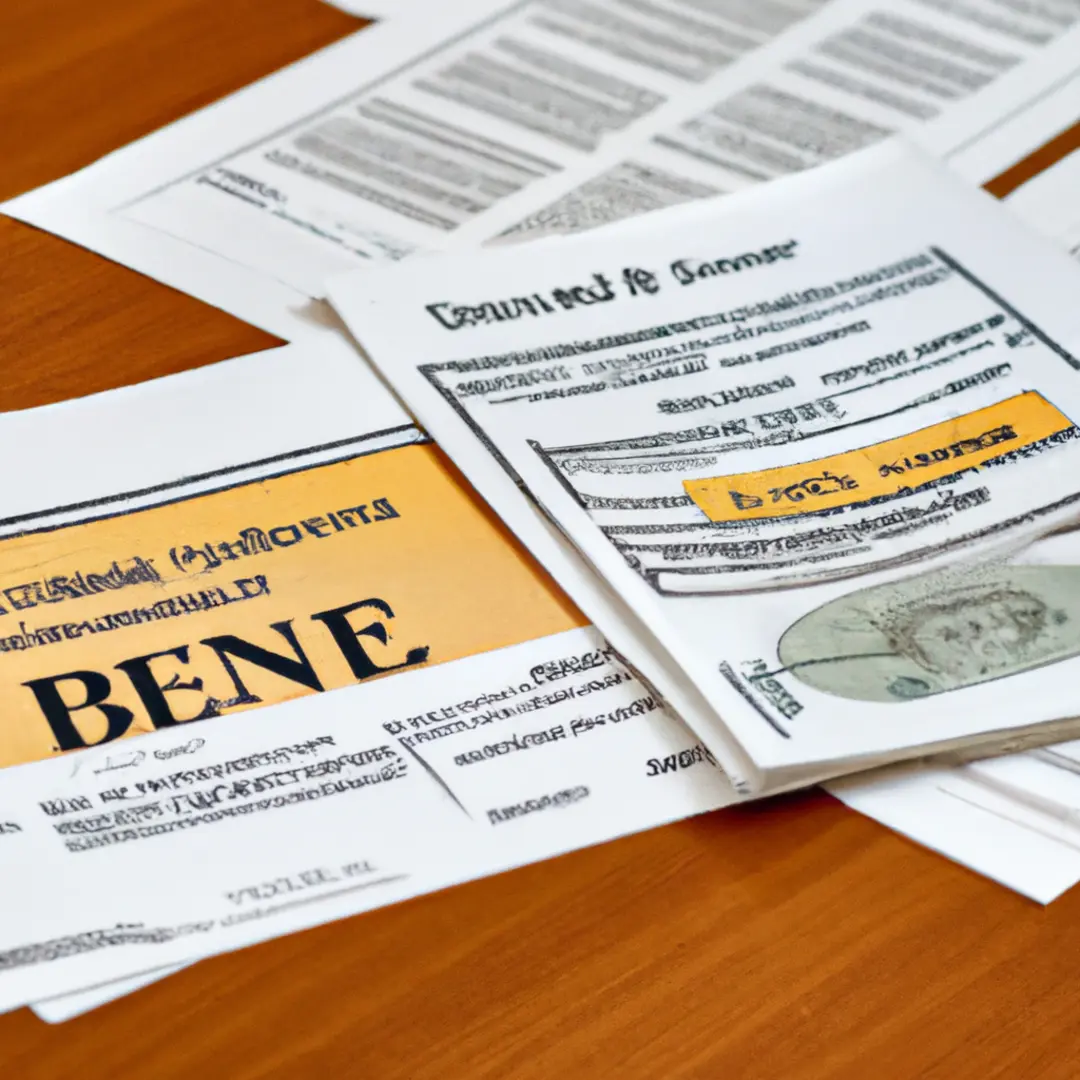Fixed-Income Securities: Bonds and Debentures
Table of contents
- Grasping Fixed-Income Securities
- The Attraction of Fixed-Income Securities
- The Importance of Fixed-Income Securities
- Unraveling Bonds
- Various Bond Types
- An Overview on Bond Terms
- Bonds: Trading and Pricing
- Assessing Bond Risks
- The World of Debentures
- Comparison: Debentures vs Bonds
- Categorizing Debentures
- The Yield and Risks of Debentures
- Investor Strategies and Considerations for Debentures
- Return and Risk for Fixed-Income Securities
- The Impact of Credit Ratings
- Interest Rate Risks
- Investing in Bonds and Debentures
- Direct Investments
- Bond Funds and ETFs
- Considering Tax Implications
- Understanding the Fixed-Income Market
- Buy and Sell Strategies for Fixed-Income Securities
- Diversification and Fixed-Income Investing
- Navigating Interest Rates
- Investment Strategies for Varying Interest Rate Environments
- Fixed-Income Markets: Diversification and Higher Returns
- Emerging Markets and High yield Opportunities
- The Stability of Sovereign Debt
- Regulatory Considerations
- Tax Implications
- Municipal Bonds and Tax Benefits
- Future Trends
- Technology’s Role
- ESG (Environmental, Social, and Governance) Factors
- Conclusion
Grasping Fixed-Income Securities

Essentially, fixed-income securities offer steady returns to investors within a set timeframe. Due to their low-risk nature, they’re alluring to those seeking a dependable income flow.
The Attraction of Fixed-Income Securities

These types of securities draw investors for their regular income and for added diversification in investment portfolios. Plus, they secure the original investment amount until maturity.
The Importance of Fixed-Income Securities
In a diversified portfolio, fixed-income securities provide a stable counterbalance to more volatile assets like stocks, promoting more dependable returns and reducing risk.
Unraveling Bonds

Bonds are debt tools issued by entities including governments and corporations wishing to raise capital. Buying bonds means lending money to the issuer in return for interest payments and principal return at maturity.
Various Bond Types
Bonds take various forms, including government and corporate bonds, municipal bonds, and mortgage-backed securities, making it easier for investors to cater to their investment objectives.
An Overview on Bond Terms
The term “maturity” specifies the timeline for principal repayment. Face value” is the amount invested initially, and “coupon rate” defines the interest rate paid periodically to the bondholder.
Bonds: Trading and Pricing

Factors influencing bond pricing include prevailing interest rates, credit ratings, and market demand. Bonds can be traded on secondary markets, allowing investors to buy and sell bonds based on market prices.
Assessing Bond Risks
Evaluating risks like creditworthiness, interest rate changes, and economic conditions is critical in bond investing. They can affect a bond’s risk profile significantly. Credit ratings aid investors in assessing default risk and making informed decisions.
The World of Debentures
Debentures, like bonds, are also fixed-income securities. However, debentures are unsecured debt instruments that rely entirely on the issuer’s creditworthiness for repayment.
Comparison: Debentures vs Bonds

The primary difference between bonds and debentures lies in security. Bonds often have specific assets or revenue streams as a security layer, while debentures depend solely on the issuer’s ability to repay the debt.
Categorizing Debentures
Debentures can be secured or unsecured. Secured debentures have collateral, providing a safety net for investors, while unsecured debentures do not.
The Yield and Risks of Debentures

The yield from debenture investments typically matches the risk level of the issuer. Understanding the involved risks, such as default and interest rate risks, is crucial for sound investment decisions.
Investor Strategies and Considerations for Debentures
Investors must evaluate the issuer’s creditworthiness, assess the current interest rate environment, and diversify their debenture holdings to distribute risk effectively.
Return and Risk for Fixed-Income Securities
Fixed-income securities carry risks, including credit, interest rate, liquidity, and inflation risks. A clear understanding of these risks can guide investors towards optimizing returns and making informed decisions.
The Impact of Credit Ratings

Credit ratings are instrumental in determining the credibility of bond and debenture issuers, assisting investors in gauging the associated risks.
Interest Rate Risks
 A rise in interest rates decreases existing bond prices, affecting the value of investments negatively. The reverse holds true when interest rates fall.
A rise in interest rates decreases existing bond prices, affecting the value of investments negatively. The reverse holds true when interest rates fall.
Inflation can diminish future cash flow purchasing power. The fixed interest payments of fixed-income investments become less valuable over time due to inflation risk.
Investing in Bonds and Debentures
To invest in bonds and debentures, investors should set clear goals, establish risk tolerance, conduct detailed research, and diversify their portfolio to lessen risk.
Direct Investments

Bonds and debentures can be purchased directly through brokers or financial intermediaries, providing more control over security selection and investment terms.
Bond Funds and ETFs
Investors can choose bond funds or Exchange-Traded Funds (ETFs) for diversification, eliminating the need for individual security selection.
Considering Tax Implications
Interest income from bonds and debentures is typically subject to taxation. Investors need to understand tax rules to optimize returns.
Understanding the Fixed-Income Market
Market conditions can significantly influence bond and debenture prices, making it important for investors to stay informed.
Buy and Sell Strategies for Fixed-Income Securities

Investors can implement various strategies like buy-and-hold, active trading, or use interest rate forecasts to maximize returns and manage risks.
Diversification and Fixed-Income Investing
Diversification is key and helps to mitigate potential losses and increase the chances of achieving desired returns.
Navigating Interest Rates
Interest rates and bond prices have an inverse relationship. Interest rate forecasting can help investors adapt their investment strategy accordingly.
Investment Strategies for Varying Interest Rate Environments

Investors can adjust their strategies depending on the interest rate environment. Short-duration bonds, floating-rate securities, and bond laddering can offer benefits in a rising rate environment. Longer-duration bonds and bond mutual funds may be favored in a falling rate scenario.
Fixed-Income Markets: Diversification and Higher Returns
Investors can invest domestically or internationally to amplify diversification and potentially obtain higher returns.
Emerging Markets and High yield Opportunities
Bonds and debentures issued in developing countries offer opportunities for high yields and growth but they come with increased risk levels due to political and economic uncertainties.
The Stability of Sovereign Debt
 Sovereign debt issued by governments can offer stability and reliable income streams, but investors need to understand the specific risks associated with each country’s political and fiscal environment.
Sovereign debt issued by governments can offer stability and reliable income streams, but investors need to understand the specific risks associated with each country’s political and fiscal environment.
Regulatory Considerations
Fixed-income securities are regulated by governing bodies to protect investors, ensure transparency, and maintain fair trading practices in the market.
Tax Implications
Investors need to understand the tax laws and how they apply to their specific situation when investing in bonds and debentures.
Municipal Bonds and Tax Benefits

Municipal bonds, or “munis,” are known for their tax advantages, often exempt from federal and sometimes state and local taxes. However, they come with limitations and specific rules.
Future Trends
Continual innovations, development of novel structured products, and social responsible investing options feature prominently in the future of fixed-income securities.
Technology’s Role
Technology continues to streamline fixed-income trading, enhancing efficiency, and transparency, allowing speedier and more accurate trades.
ESG (Environmental, Social, and Governance) Factors
ESG considerations are now central to the investment decision-making process, aligning with sustainable and responsible practices for positive social and environmental outcomes.
Conclusion

In conclusion, fixed-income securities offer stability, capital preservation, and diversification benefits. They play a vital role in investment portfolios. Understanding various types of fixed-income investments, risk factors, investment strategies, and market dynamics help informed decision-making and achievement of investment goals.
Key Takeaways:
- Fixed-income securities provide reliable income and capital preservation.
- Bonds and debentures differ in terms of security and collateralization.
- Risks include credit, interest rate, and inflation risks.
- Investors can invest directly or through funds and ETFs.
- Interest rates significantly impact fixed-income securities.
- Global markets offer diversification opportunities.
- Tax and regulatory considerations vary.
- The future of fixed-income securities looks bright with innovative products and ESG integration.



